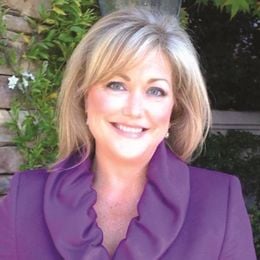Moving Together to Reduce the Risk of Falls
Strength and conditioning classes focus on fall prevention and connecting with others
Dance is for everybody. I believe it came from the people and it should always be delivered back to the people.
– Alvin Ailey
Verine Morris, 42, has spent more than a decade with a fear of falling. Wheelchair-bound for 10 years after a nasty fall at work, followed by a terrifying car accident, she decided she needed to overcome her anxiety and learn how to move independently again. This epiphany led Morris to Celeste Carlucci’s New York City-based classes, Fall Stop MOVE STRONG.
Carlucci, a former Alvin Ailey dance student who performed with Broadway’s legendary choreographer Bob Fosse (Chicago, Cabaret), has spent more than 20 years as a fitness and wellness expert teaching movement and body strengthening. Her fall prevention-designed class technique was created primarily to help those over 50 focus on proper alignment, posture and what she calls “the joy of movement.”
Fall Prevention Through 'Fun and Community'
It is this last element that draws so many older adults — most of whom are in their 60s, 70s, 80s and even 90s — to her weekly classes. Or as Carlucci states, “We keep up with exercise when it’s joyful and not spoon-fed medicine. That is what makes these classes unique — it’s the sense of fun and community.” (Morris is more than a decade younger than the average student in Carlucci’s classes. But she says the older students have become both friends and mentors and she finds her older dance mates "inspiring — I want to be able to move like them when I’m 90.”)
“A good teacher is an entertainer and that is what Celeste delivers — great entertainment that makes us forget about age for a while,” says Tom Grubb (pictured below), 76, who has been taking her classes for the last five years.

A physician directed Grubb to Carlucci’s classes after Grubb fell and broke his arm. He had been walking his dog on a Manhattan street that was slippery with melting snow. He also had balance problems.
As a pianist and music teacher at The Juilliard School, Grubb says, “I understand that nothing gets better without practice, so I have dedicated myself to the routine of taking Celeste’s classes twice a week. One thing I like is that Celeste doesn’t treat us like old people.”
While the Fall Stop MOVE STRONG classes average a ratio of 10-to-1 women to men, a study showed men over 50 are more likely to fall than women of the same age.
All Too Common
Every year, 2.8 million older Americans are treated in emergency departments and 800,000 patients are hospitalized because of a fall injury, according to the Centers for Disease Control and Prevention (CDC). In fact, more than one out of four older people fall each year. But less than half tell their doctor.
Falling once can double the chance of falling again, according to research from the Fall Prevention Center of Excellence at the University of Southern California Andrus Gerontology School.
Often, older adults who have fallen restrict their activity by not leaving the house. Yet statistics show 55 percent of falls among the older population occur in the home.
Fall Season Means Falls Prevention
While health professionals say falling is not a normal part of aging, the causes for falling — especially as we age — can include: trip hazards in the home (such as throw rugs, poor lighting, lack of grab bars in bathrooms); medications that cause dizziness and poor vision or hearing.
However, the most important risk for falling is lack of good balance, strength and flexibility, which makes finding an appropriate exercise (or other) program to address these physical issues imperative as we grow older. In fact, the CDC website states that, “When a person is less active, they become weaker and this increases their chances of falling.”
Starting on Sept. 22 (the first official day of fall) and running through Sept. 28, awareness campaigns on preventing falls are promoted across the country, many of them at the 26,000 local senior centers and supported by the National Council on Aging (NCOA).
As one of NCOA’s Healthy Aging initiatives, this is the ninth year of the National Falls Prevention Awareness program. It encourages local social and community-based services to offer activities educating older adults on falls prevention. The NCOA provides resources and information through its Falls Prevention Resource Center.
Finding Power in the Body and the Community
Morris says that after taking Carlucci's classes, her fear of falling has diminished and she now has the courage to take risks.
In fact, risking getting out of the wheelchair is a goal she has accomplished. Morris now frequently walks without assistance around her Manhattan neighborhood and told me, “I hear Celeste’s voice when I’m walking on my own and I feel empowered. I have my freedom back.”
Morris has lost 57 pounds since starting the falls prevention classes a little over a year ago. But the more important achievement, she said, is conquering her anxiety about falling.
“Celeste is a godsend,” added Morris. “I spent 11 years living in fear and in a wheelchair but these classes have challenged my body to work hard and I’ve gain a renewed confidence in exactly what our bodies are made to do. And with my new friends at these classes, I am not alone anymore.”
Watch Carlucci teaching a Fall Stop MOVE STRONG class.

Sherri Snelling is a corporate gerontologist, speaker, and consultant in aging and caregiving. She is the author of “Me Time Monday – The Weekly Wellness Plan to Find Balance and Joy for a Busy Life” and host of the "Caregiving Club On Air" podcast. Read More

